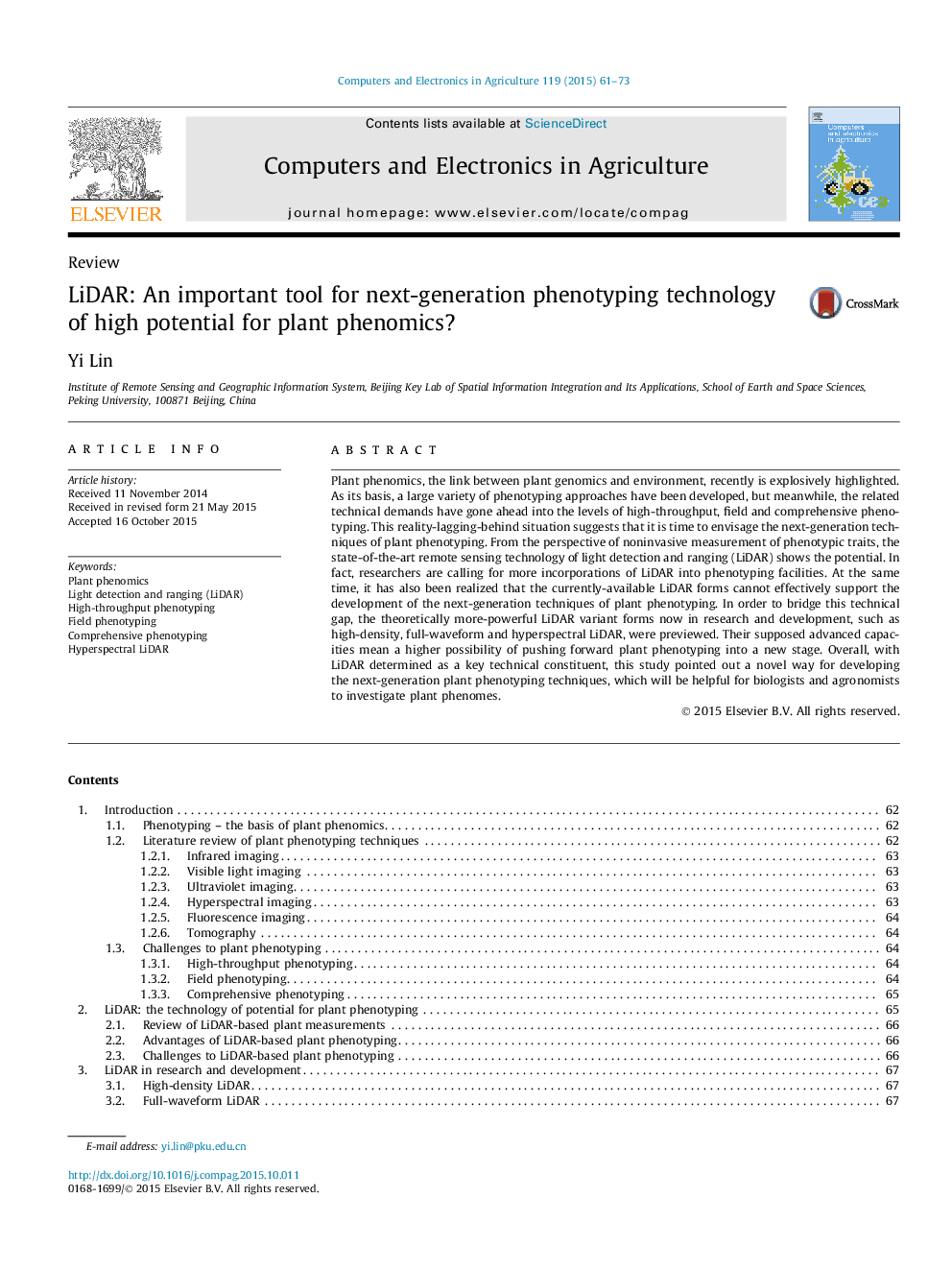| Article ID | Journal | Published Year | Pages | File Type |
|---|---|---|---|---|
| 6540585 | Computers and Electronics in Agriculture | 2015 | 13 Pages |
Abstract
Plant phenomics, the link between plant genomics and environment, recently is explosively highlighted. As its basis, a large variety of phenotyping approaches have been developed, but meanwhile, the related technical demands have gone ahead into the levels of high-throughput, field and comprehensive phenotyping. This reality-lagging-behind situation suggests that it is time to envisage the next-generation techniques of plant phenotyping. From the perspective of noninvasive measurement of phenotypic traits, the state-of-the-art remote sensing technology of light detection and ranging (LiDAR) shows the potential. In fact, researchers are calling for more incorporations of LiDAR into phenotyping facilities. At the same time, it has also been realized that the currently-available LiDAR forms cannot effectively support the development of the next-generation techniques of plant phenotyping. In order to bridge this technical gap, the theoretically more-powerful LiDAR variant forms now in research and development, such as high-density, full-waveform and hyperspectral LiDAR, were previewed. Their supposed advanced capacities mean a higher possibility of pushing forward plant phenotyping into a new stage. Overall, with LiDAR determined as a key technical constituent, this study pointed out a novel way for developing the next-generation plant phenotyping techniques, which will be helpful for biologists and agronomists to investigate plant phenomes.
Keywords
Related Topics
Physical Sciences and Engineering
Computer Science
Computer Science Applications
Authors
Yi Lin,
